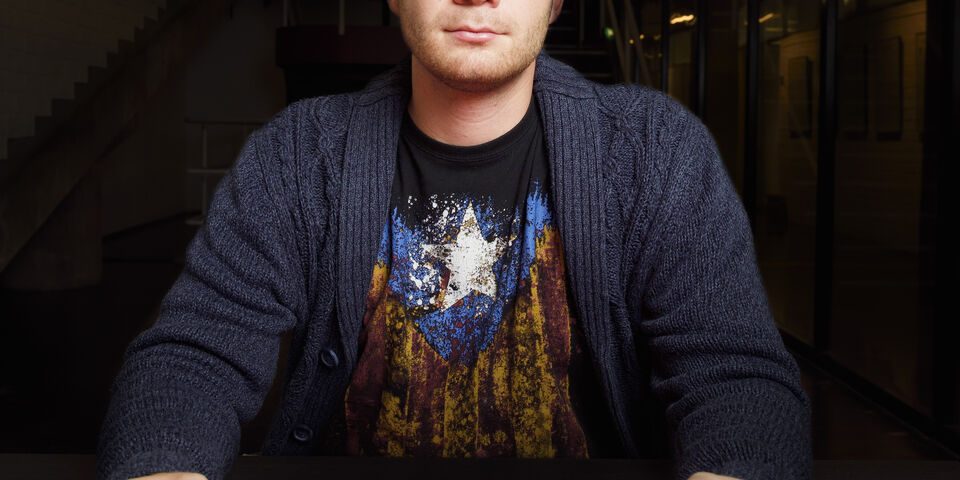Home Stretch | Immune cells under tension
A major issue with medical implants is that they are often rejected by the body: through an inflammatory reaction the immune system then tries to get rid of the foreign material. Graduating student Stan de Vries stretched immune cells in a special device, in order to see how the mechanical loading of these cells impacts the chance of a rejection reaction.
In so-called ‘in-situ tissue engineering’ a biologically degradable synthetic implant is inserted. The idea is for this implant to attract cells from the body itself, which form new, functional tissue on the site. Thus, by the time the implant has degraded, a living heart valve or a piece of blood vessel has been formed. However, even in this - still experimental - method it may happen that the immune system decides that the implant does not belong in the body, resulting in a rejection reaction.
One of the potential applications of in-situ tissue engineering is the replacement of coronary arteries: the blood vessels that supply the heart muscle with oxygenated blood. Due to the fact that these thin vessels are located on the wall of the pumping heart, they are exposed to great deformation strengths. According to Stan de Vries, who graduated in the Soft Tissue Biomechanics & Tissue Engineering group, there are no artificial blood vessels that can cope with these strengths in the long term.
This is why at present a bypass operation usually involves taking a vein from an arm or leg of the patient, but that is not pleasant, of course. “We would prefer to be able to grow new coronary arteries by means of a temporary implant. That would benefit a great many people”, says the Biomedical Engineering student. “Indeed, in the Netherlands alone there are more than ten thousand people every year who need bypasses.”
Whether the body accepts an implant depends among other things on the so-called macrophages, says De Vries. “Macrophages are immune cells that are involved in digesting and removing unwanted cells or material, but also in the formation of new tissue.” The behavior of these macrophages seems to depend on the mechanical forces to which they are subjected in the body, he explains. That makes the elasticity of the artificial temporary coronary arteries of crucial importance, as this determines the degree of ‘stretch’ experienced by the macrophages that attach to them.
Attaching, stretching and shifting
In order to find out how exactly these macrophages react to stretching forces, De Vries put them into the Flexcell, a device in which the cells adhere to a fleece, which is subsequently stretched tightly across a block. Afterwards he examined the immune cells for changes in the RNA. This molecule, which is related to DNA, is the blueprint for proteins that are created in the ribosomes, the cell’s protein factories. As a result, the RNA that is present says a lot about the activity of the macrophages.
Unfortunately the Flexcell did not prove to be constant enough and the stretch dimensions that he wanted were not attained, says De Vries. “Originally I also wanted to look at the shear forces which the passing blood exercises on the macrophages, but that turned out to be even more difficult: the cells were washed away too fast.” This is why, on the basis of these findings, a PhD candidate is now working with a device that can combine the two measurements.
In spite of the disappointing experimental results De Vries is still very enthusiastic about the design. Which explains why he is happy to be allowed to do an internship at Drexel University in Philadelphia in the coming months. There he is going to test a special coating that has to induce macrophages to accept the implant.


Discussion